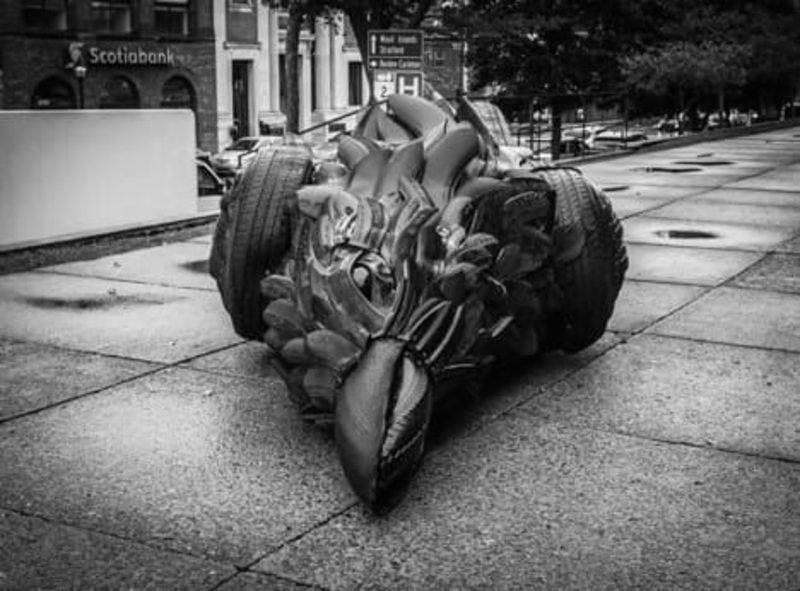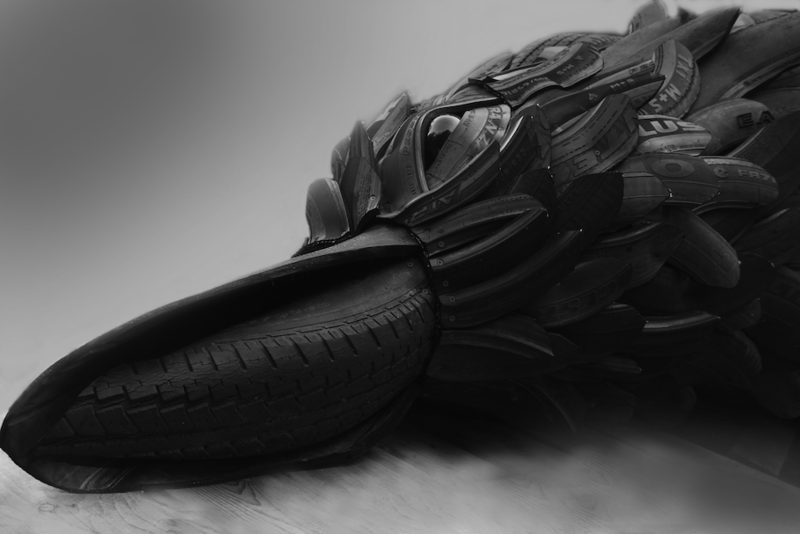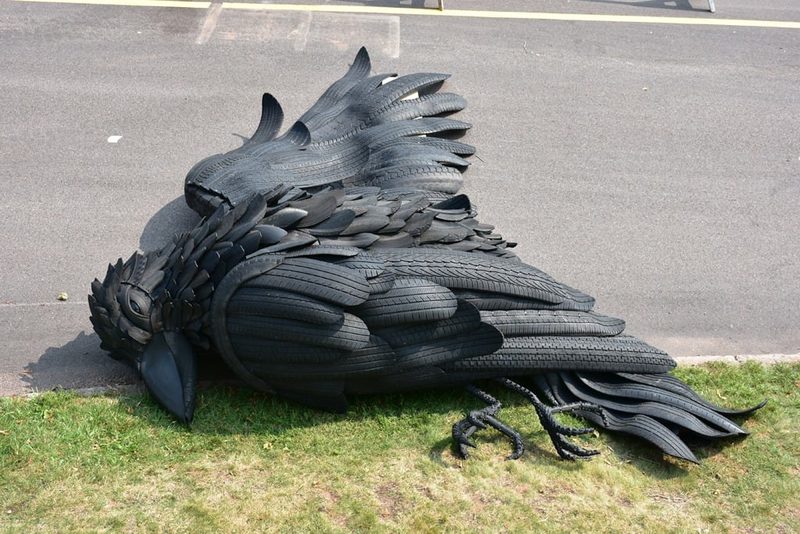Originally posted here: http://www.watchforwildlife.ca/blog/roadkilledcrows-gbeaulieusactivistar...
Author's note: I spoke recently with artist Gerald Beaulieu because I wanted to talk to him about what inspired him to create a public art installation of road-killed crows. The full interview will be printed in the Association of Literature and Environment Canada's The Goose in the Spring 2019 issue. Part of his response to the question "Why Crows?" follows. - Wanda Baxter
"I admire Crows, and other wildlife that adapt to us. They are intelligent and capable of eating a variety of things. It is not uncommon to see crows eating the consequences of our commuting, and roadkill makes a substantial contribution to their diet. As scavengers it is what they do: clean up a lot of our mess. One of the risks of scavenging is being hit by vehicles, which doubles the impact of collisions. So the crows don’t just represent ‘roadkill’, but also the layers of the impacts of driving." - Gerald Beaulieu
Photo credit, above: The Charlottetown Guardian.
Gerald Beaulieu’s crows are like massive, soundless speakers: at 386 kilograms each, 5 meters long, made of used tires with open eyes staring out; they say what most roadkill never get the chance to say - notice me.
The crow sculptures can viewed as public memorials to the dead in the way heroic leaders are (though in tragic, not heroic pose); the reverse of how they are more normally seen – like trash at the roadside. Beaulieu elevates dead crows to a position of importance. Larger than life and made of the material that often kills them, they are impossible to ignore.

Photo: Heather Ogg
I first heard of Prince Edward Island artist Gerald Beaulieu and his public art installation Where the Rubber Hits the Road via a CBC PEI Interview with the artist. On CBC’s online channel he is pictured with the crows in front of the Charlottetown Confederation Centre where the huge, rubber-feathered birds are sprawled across the pedestrian concourse and down the stairs. On commission to the centrally-located arts centre, they will be installed there until next Spring, though they were originally created for the Arts in the Open Festival held in Charlottetown annually.
I was taken aback by the images of the crows. The sculptures are so large and lifelike, their eyes seemingly expressing both pain and accusation; they are somehow anything but dead.

Photo: Gerald Beaulieu
Because I work to raise awareness of the impacts of wildlife-vehicle collisions, Beaulieu’s crows have particular significance. Trying to bring attention to the impacts of driving and transportation infrastructure on wildlife is a difficult task. It is a fine balance to bring attention to the staggering amount of mortality and suffering that results from the collide of wildlife and vehicles; natural and human-built worlds without turning people away. But Beaulieu expresses this complicated subject in the most impactful and palatable way. By using pieces of vehicles to create the works - the tires themselves - he deftly turns road-killed crows into impossible-to-ignore visible reminders. They die on the road because of us.
Seeing the crows has significant impact. You can’t not see them. They clearly represent the incompatible juxtaposition of human and natural worlds, of man-made materials as heavy, deadweight compared to the weightlessness of feathers, of the collateral damage of driving that many wild creatures become.
Beaulieau’s Crows are huge not just because of their size, but also for what they say – and how they say it. Their black eyes stare out as haunting reminders that the way we live and move impinges directly on the ability of nature to survive.
Where the Rubber Hits the Road is a striking and discomfiting installation. It says, without words, what most of us prefer not to hear. We are the murderers of crows.

Photo: Imgur
--
Wanda Baxter has a Master of Environmental Design with concentration in policy and planning from the University of Calgary. She developed the Watch for Wildlife program after identifying a lack of wildlife-vehicle collision prevention education and mitigation strategy in Nova Scotia. For details on her background, please see: www.linkedin.ca/in/wandabaxter
Wanda lives and works on a restored farmstead just north of Lunenburg NS and is the author of If I had an Old House on the East Coast, published by Nimbus Publishing.
--
References/Info
Roadkill Crows Installed outside Charlottetown Arts Centre, CBC PEI. https://www.cbc.ca/news/canada/prince-edward-island/pei-roadkill-crows-a...
Photo Credits:
Side-view close up, Black and White. - Gerald Beaulieu
Children with Crow - The Charlottetown Guardian
Black and White full crow on concourse - Heather Ogg
Crow with beak on grass - Imgur Photos (ILickAnimals)
Where the Rubber Meets the Road: Meaning - The moment of truth of something.
https://www.urbandictionary.com/define.php?term=where%20the%20rubber%20m...
Murder of Crows: A large group of crows.
http://www.pbs.org/wnet/nature/a-murder-of-crows-crow-facts/5965/
Gerald Beaulieu bio:
https://www8.umoncton.ca/artotheque/biographie-biography-eng.php?artiste=3
